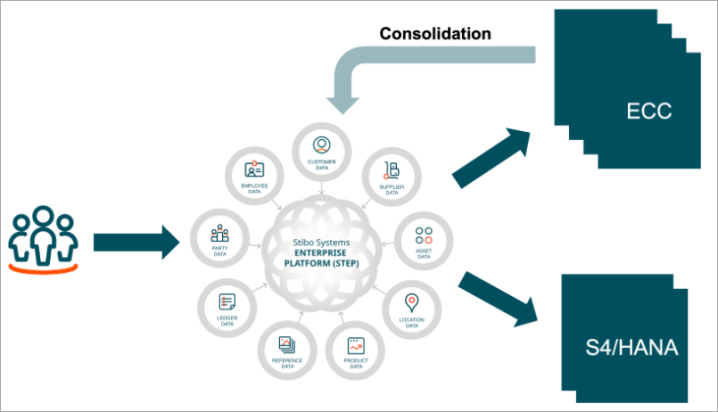Note: The information in these guidelines is currently only for Product MDM solutions.
What is the Business Problem?
SAP will be ending R/3 and ECC support by 2027, which requires a transition to SAP S/4 HANA. This transition is both challenging and time-consuming for several reasons:
-
There could be multiple ERPs involved which result in multiple data silos.
-
S/4 HANA is exclusively compatible with the SAP HANA database.
-
There will be complexity in data transfers due to data model changes that SAP has made in their S/4 HANA Database. For example:
-
Reduced number of tables eliminating redundancy.
-
Integrated customers and vendors into a unified master data object called business partners (BPs).
-
This means that a straightforward migration approach cannot be used in all cases. And, the entire migration journey could be a multi-year project with a combination of Brownfield and Greenfield migration strategies1 where huge amounts of data would have to be analyzed and cleansed, logics would have to be rebuilt, and business processes would have to be reengineered, plus much more. This would be extremely expensive.

STEP Solution
STEP plays a central role by helping with the consolidation and migration process, providing the data quality and governance support. With STEP, you can achieve a smooth, seamless, and time-effective transition to SAP S/4 HANA without disrupting your critical business processes. You also get MDM as a bonus to consolidate data silos and harmonize data, which would ensure:
-
Streamlined onboarding with improved data consistency, accuracy and completeness.
-
Decoupling of master data management from legacy systems.
1 Studies show that a full Greenfield approach is rare amongst studied companies - only 14% have decided on this route. The majority plan to use a Brownfield approach (44%) or a hybrid approach, i.e., mixing both approaches (42%)